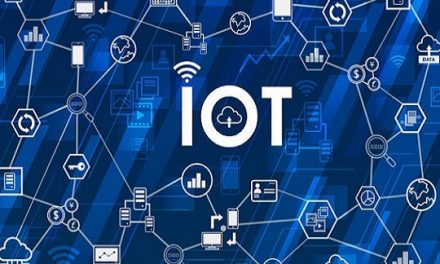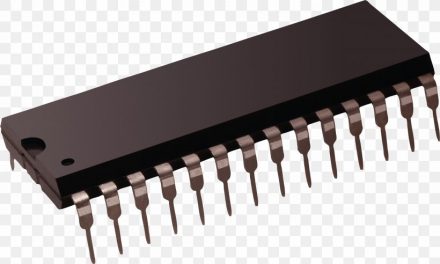The advances in technology such as the Internet of Things has ushered a digital revolution. Through the use of cloud computing and IoT, the technologies have resulted in massive benefits such as cost savings, and higher productivity in the workforce. This article explains the two technologies, IoT and cloud computing.
Before we investigate the relationship between IoT and cloud computing, let us first define these two terms.
Table of Contents
What is IoT?
The Internet of things is a system of interrelated computing devices, mechanical and digital machines provided with unique identifiers and the ability to transfer data over a network without requiring human-to-human or human-to-computer interaction.
The Internet of Things comprises of the sensors that are used in various applications to collect data, and this data is usually processed in real time. An example is an autonomous car. This car comprises of many IoT sensors. These are used to get details of the environment in which the car is. The car processes the information obtained from these various IoT sensors in real time to help it navigate, and to avoid collisions.
The amalgamation of IoT and cloud computing brings a host of benefits to the entire supply chain.
What is Cloud Computing?
Cloud computing is the practice of using a network of remote servers hosted on the Internet to store, manage, and process data, rather than a local server or a personal computer.
This technology is further broken down into 6 categories.
1. Software as a Service (SaaS)
This is the highest abstraction layer of the cloud. In this service, the user uses software applications that are based in the cloud. There is very little configuration that is done by the user, and thus virtually any tech literate person can user SaaS products. A common example of a SaaS product that virtually everyone uses is the Gmail application. This application just needs the user to install it, and he or she can immediately use it without consulting any IT professionals. Some applications use an amalgamation of cloud computing and IoT e.g. navigation systems in cars that use the data of the car such as the position and speed, and use the information from the servers to help the driver navigate to his destination.
Other examples include: Dropbox, Google Apps, Salesforce, Concur, Slack, GoToMeeting, and Cisco WebEx
2. Platform as a Service (PaaS)
This is the abstraction layer that is one layer lower than the SaaS platform. In this service, the cloud has everything that is needed to build and deliver cloud based applications. This removes the need for the user or company to purchase and maintain hardware, software, virtual machines, etc. The company simply chooses the platform that it wants to suit its needs. This therefore means that there is a lot more customization that is possible in this service.
Examples include: Openshift, Force.com, Windows Azure Heroku, Apache Stratos, and AWS Elastic Beanstalk
3. Infrastructure as a Service (IaaS)
This service allows the companies to get servers, storage, networking, and data centres. The companies do not need to own or manage any of the physical hardware. The companies however need to install and configure their own virtual machines as well as all of the software that is run on those virtual machines.
Examples include: Google Compute Engine, Microsoft Azure, Linode, Rackspace, Amazon Web Services, and DigitalOcean
4. Public Cloud
These are the IT services that are offered by the external providers on the public internet. These IT services are made available to anyone who wishes to use or buy them. The servers are shared between several independent tenants.
Examples include: Sun Cloud, IBM Blue Cloud, Amazon Elastic Compute Cloud, and the Windows Azure Services Platform.
5. Private Cloud
This refers to computing services that are offered either over the internet, or over a private internal network to select users. The services are not available to the general public unlike the public cloud. Two models for cloud services can be delivered in the private cloud and these are IaaS or PaaS.
Examples include: Helion Cloud Suite, Helion Cloud System Hardware, Helion Managed Private Cloud and Managed Virtual Private Cloud services.
6. Hybrid Cloud
This is a cloud computing environment that uses the combination of the public cloud and private cloud technologies.
Examples of hybrid cloud providers include: Amazon, Microsoft, Google, Cisco, and NetApp.
How Cloud Computing Augments the IoT Growth
1. Remote Computing Power
With the ever improving advances in communication technologies, the IoT devices are able to access remote computing services in the fraction of a second. This therefore reduces the need for maintaining on-premises infrastructure, which therefore reduces costs. This amalgamation of IoT and cloud computing allows for the organizations to tap new industries and explore more opportunities.
2. Security and Privacy
The IoT devices that were introduced allowed for organizations to automate their tasks and activities. This was an advantage as the devices bring a host of benefits such as reducing downtime and increasing efficiency, but the devices posed a grave security to the companies as there were not many fool proof security measures present in those IoT devices. The cloud solutions allow for fool proof security measures as there are many robust encryption and authentication protocols. The amalgamation of IoT and cloud computing therefore greatly increases security.
3. Data Integration
The IoT devices are getting more and more popular. As a result, there is a rise in the adoption of the devices across various industries. This results in a flood of data which is quite difficult to process and gain valuable insights from. Cloud based solutions provide robust data integrated capabilities that are able to handle massive volumes of data. They are also able to handle massive data that comes from not only one source, but many sources. As a result of the amalgamation of IoT and cloud computing, the data from both the enterprise systems and connected devices is able to be stored processed and analysed in the same place.
4. Inter-device Communication
The use of cloud computing allows various IoT sensors to be connected to it. The IoT devices and services need to connect with each other. The cloud solutions are able to facilitate the seamless communication between the IoT devices. There are very many robust application programming interfaces these platforms enable such as Cloudflare and Dropstr. They allow the interaction between the IoT connected devices and other devices such as smartphones. This amalgamation of IoT and cloud computing paves way for the growth of connected technologies.
Conclusion
IoT devices heavily rely on cloud computing. The IoT and cloud computing technologies complement each other. This article has clearly shown how the IoT and cloud computing technologies complement each other.
We hope you loved the article!





